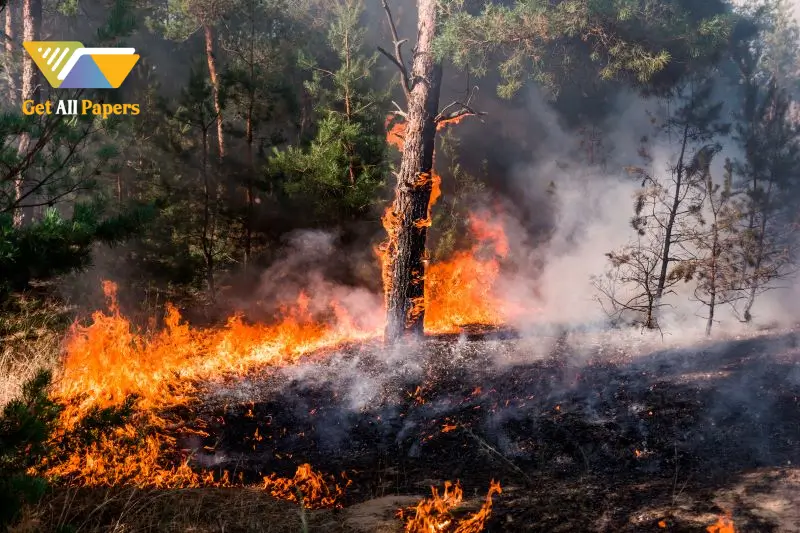
The Interplay Between Global Warming And Forest Fires - Get All Paperss
Written By: Ann R. Barwick
Published On: Aug 14,2023
Introduction:
The phenomenon of forest fires has long captured the attention of scientists, environmentalists, and the general public due to its destructive potential and impact on ecosystems. In recent years, the connection between forest fires and global warming has become a subject of significant discussion. Forest fires are often perceived as a sheer consequence of global warming, but the relationship between these two phenomena is more complex than a simple cause-and-effect scenario. This essay explores the intricate interplay between global warming and forest fires, considering both the direct and indirect influences that contribute to the occurrence and intensity of these fires.
Global Warming and Climate Change:
Global warming, caused primarily by the increase in greenhouse gas emissions from human activities, is a key driver of climate change. The rise in average global temperatures leads to shifts in weather patterns, altered precipitation levels, and the exacerbation of extreme weather events. These changes have direct implications for the conditions conducive to forest fires.
Direct Influence of Global Warming on Forest Fires:
- Drier Conditions: Rising temperatures lead to increased evaporation and reduced soil moisture, creating drier conditions in many forested areas. Dry vegetation becomes more susceptible to ignition, effectively increasing the likelihood of fire initiation.
- Extended Fire Seasons: Warmer temperatures prolong the fire season, allowing fires to occur in regions that were historically less prone to them. This extended fire season increases the window of opportunity for fires to spread and intensify.
- Increased Lightning Activity: Global warming has been associated with an increase in lightning activity due to the changing atmospheric conditions. Lightning strikes are a natural ignition source for fires in forests, and an increase in lightning can lead to more fire starts.
Indirect Influences of Global Warming on Forest Fires:
- Insect Outbreaks: Warmer temperatures can lead to outbreaks of pests such as bark beetles, which weaken trees and make them more susceptible to fires. Dead or dying trees provide abundant fuel for fires to spread.
- Altered Plant Composition: Changing climate conditions can impact the composition of plant species in forests. Invasive species and more fire-prone vegetation can replace native plants, altering the fire dynamics in an area.
- Thawing Permafrost: In some regions, global warming contributes to the thawing of permafrost. This can lead to the formation of subsidence holes, which can accumulate flammable materials and become ignition points for fires.
Mitigation and Adaptation:
Addressing the connection between global warming and forest fires requires a multi-faceted approach that includes both mitigation and adaptation strategies. Mitigation efforts involve reducing greenhouse gas emissions to slow down the pace of global warming, ultimately reducing the extent of its impact on forest fire conditions. Adaptation strategies focus on managing and minimizing the risks posed by increasingly fire-prone environments, including better forest management practices, early warning systems, and community preparedness.
Conclusion:
In conclusion, while forest fires are not a sheer consequence of global warming, the intricate relationship between these two phenomena cannot be denied. Global warming directly influences the conditions necessary for fires to ignite and spread, but it also indirectly impacts forest ecosystems in ways that can enhance fire susceptibility. To address this issue, a comprehensive approach that involves global efforts to mitigate climate change and localized strategies to adapt to changing fire dynamics is essential. Understanding this interplay is crucial for safeguarding our forests and the ecosystems they support for future generations.
To checkout more about recent scenarios and on-going situation in world visit https://getallpapers.com
Related Posts







